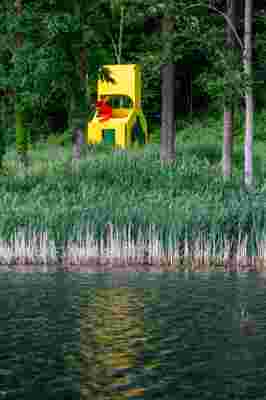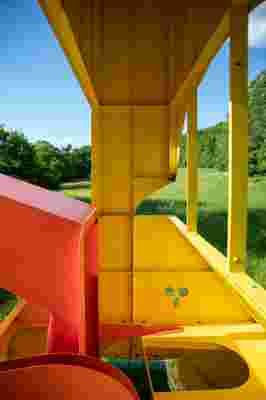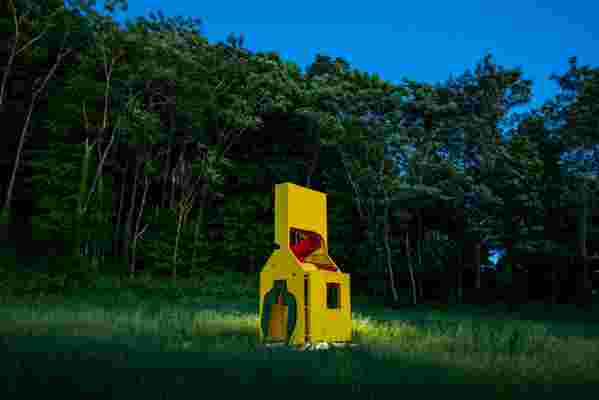The Story Behind This Poetic 20-Foot-Tall Folly in Hudson, New York
I’m a student of the folly,” says Romanian-born, Brooklyn-based artist Serban Ionescu, who enthusiastically recalls studying Bernard Tschumi’s Parisian Parc de la Villette during architecture school at Pratt Institute. “It’s a more poetic form of architecture—a spiritual tributary versus a building made for function and usage.” So when a collector asked Ionescu about a palm-sized maquette in his Red Hook studio, he suddenly envisioned the prototype as a folly, replying, “It’s called Chapel for an Apple, and it could be 20 feet tall.”

The silhouette of Ionescu’s folly nods to the classic a-frame of a chapel as well as the industrial chimneys of nearby factories.

Inside the chapel, visitors can climb a small ladder to take in this view.
Three months later, after bringing the model to life with his fabricator friends from Shape Studio, Ionescu was in Hudson, New York—with hunks of steel suspended from a crane—installing the 5,000-pound figment of his imagination in a field owned by Sunfair, a forthcoming artist residency and concept hotel. The work is Ionescu’s largest yet and marks his return to architecture, a medium he had abandoned years ago for more impulsive practices in painting and sculpture, including strange, sometimes functional furnishings shown by the New York City gallery R & Co.

Those studies in color, shape, and volume have led him back to buildings. Sort of. Much like his chairs, which aren’t always intended for sitting, the Chapel throws easy categorization out the window. “The unidentified land object,” as Ionescu calls it, looks positively alien amid earth, water, and sky. Enter through either of two person-shaped doorways (modeled on Ionescu’s dimensions) to find a single seat, a window framing a pond, and a ladder to climb for an alternate view. Ionescu calls the Chapel for one “a transformative space.” serbanionescuom